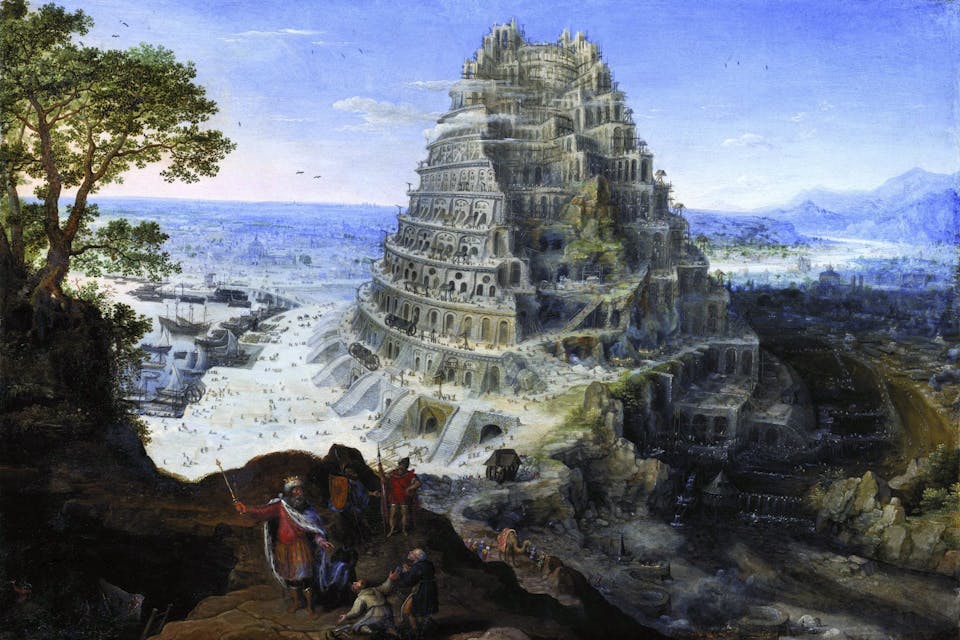
November 9, 2022
Was There an Ancient Superlanguage Called Nostratic?
And could the story of the Tower of Babel actually reflect a dim folk-memory of its breakup?
Two years ago, in conjunction with the Torah reading of Noaḥ and its story of the Tower of Babel, I wrote a column about Nostratics, a field of historical linguistics based on the theory that a large number of the world’s languages and language families traditionally thought to be unrelated actually have a distant common ancestor. An idea first developed in the early 20th century by the Danish linguist Holger Pedersen, who coined “Nostratic” from the Latin word nostras, “of our country” (from noster, “our”), its pursuit has gradually gone from a fringe discipline to a respected one, though one whose claims are still disputed by many and perhaps most linguists.
Indeed, Nostraticians themselves cannot agree on what language families should be considered descendants of Nostratic. Pedersen was conservative in this respect, even though the families included by him embrace a huge number of contemporary speakers spread over a vast part of the globe. These are the Indo-European family, which takes in nearly all the languages of Europe, of which English, Spanish, Portuguese, and French spread to the Americas, plus Kurdish, Persian, and such Sanskrit-derived tongues of north India as Hindi and Bengali; the Afroasiatic family, to which belong the Semitic languages, among them Arabic, Hebrew, Amharic, and Tigrinya (the latter two spoken in Ethiopia and Eritrea), and the African groupings of Berber and its dialects, Chadic, Cushitic, and Omotic; and the Uralic and Altaic families, which are sometimes lumped together and with which are classed Finnish, Estonian, Hungarian, probably Turkish, and possibly Korean and Japanese.
There are many “probably’s” and “possibly’s” in Nostratics, as might be expected of a field that seeks to connect seemingly unconnected languages on the basis of a relatively small number of resemblances between them. When two or more languages exhibit similarities in their vocabulary, grammar, or morphology (that is, in the ways in which they form words), it is always necessary to ask whether such factors as coincidence, borrowing, and convergence (the phenomenon whereby two unrelated languages grow alike due to the proximity of their speakers) are not better explanations than common ancestry.